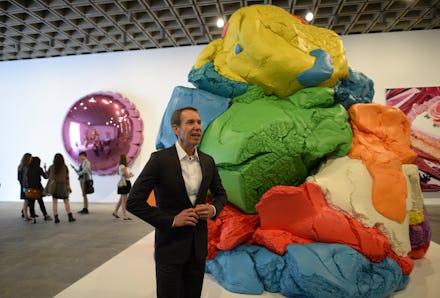78% of America's Professional Artists Have One Striking Thing in Common

They're white. All 1.09 million of them.
A recent analysis of Census Bureau data has confirmed what most artists of color already knew: They're a rare breed, and likely getting rarer.
According to Roberto A. Ferdman at the Washington Post, a creative advocacy and analysis collective called BFAMFAPhD has determined that nearly 78% of Americans earning most of their income from the arts are white, as of 2012.
This marked lack of diversity reaches all the way back to school, as 80.8% of Americans with an undergraduate art degree and a staggering 83.1% with both a degree and a professional arts job are white as well.
Such findings inevitably complicate the notion that work in the creative professions is purely meritocratic.
Background: In a September essay at Medium, Lowell Thompson illustrates the challenges of being a black artist in Chicago today. A former advertising designer who quit that industry in disgust during the early 1990s — just 1% of creative staffs at America's top 25 ad agencies were black at the time — Thompson became a painter relatively late in life.
Yet even today, he sees many of the same problems plaguing the fine art community as he did in the commercial arts: "[An] unspoken sense of separate-but-equal segregation" that, in the former case, marginalizes artists of color in favor of the white artists whose work overwhelmingly populates the city's "major art districts and major commercial galleries."
This pattern stems from a familiar set of inequities. Specifically, the same racial disparities that organize the rest of American society are equally present here. The BFAMFAPhD analysis covers a broad range of professions, from writers, visual artists and photographers to musicians, dancers and singers. In total, 1.4 milllion people identify themselves as working creatives in the U.S.
According to the Post, the racial divide among professional artists starts with, but is not limited to, the much-discussed wealth gap between white families and families of color, which unavoidably dictates who can afford art classes and lessons and who attends art schools (which tend to be some of the most expensive in the country, per a Wall Street Journal report).
This is significant when it comes to future earnings. The Post reports that among working artists, art school grads make over $6,000 more per year on average than their non-grad peers. And even when artists of color do make it through school, they are often met with a white-dominated professional sphere that historically devalues their work.
Even the "silver lining" is stained as a result. Recent reports suggest that art school grads — even those who don't go on to a career in the arts, and despite their comparatively low earnings — are "among the happiest professionals in the U.S.," according to Mic. A Strategic National Arts Alumni survey claims they report a generally high satisfaction with their income, and that their work accurately reflects their interests, values and personalities.
However, like so many other measures of income and employment in the U.S., this pattern reflects a distinctly white-skewed bias. By virtue of these professions' lack of diversity, people of color are largely absent from the equation. And with higher education costs continuing to rise, that doesn't stand to change any time soon.